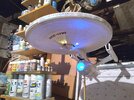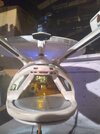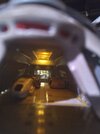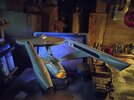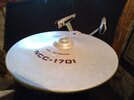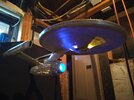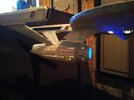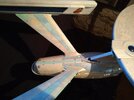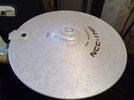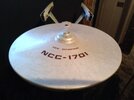I'm finally getting around to assembling and painting the 1/350th scale Star Trek Enterprise NCC-1701 model that I bought years ago. I've been trying to find pictures online of completed models that are painted according to the instructions, but with no success.
I can't even get past the first step because what I'm seeing online does not match the instructions. Specifically, the instructions say to paint a part of the top dome on the saucer section "rust".

If you download look at the PDF, it says to use color "H" on the dome, where "H" is rust (Model Master 1785). I've never seen a picture of the Enterprise with a dark red band on the dome.
I can't even get past the first step because what I'm seeing online does not match the instructions. Specifically, the instructions say to paint a part of the top dome on the saucer section "rust".

If you download look at the PDF, it says to use color "H" on the dome, where "H" is rust (Model Master 1785). I've never seen a picture of the Enterprise with a dark red band on the dome.


